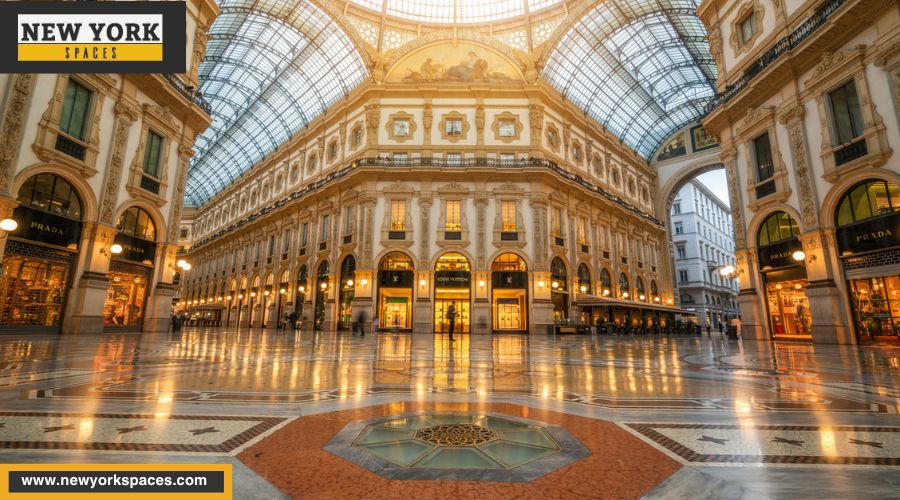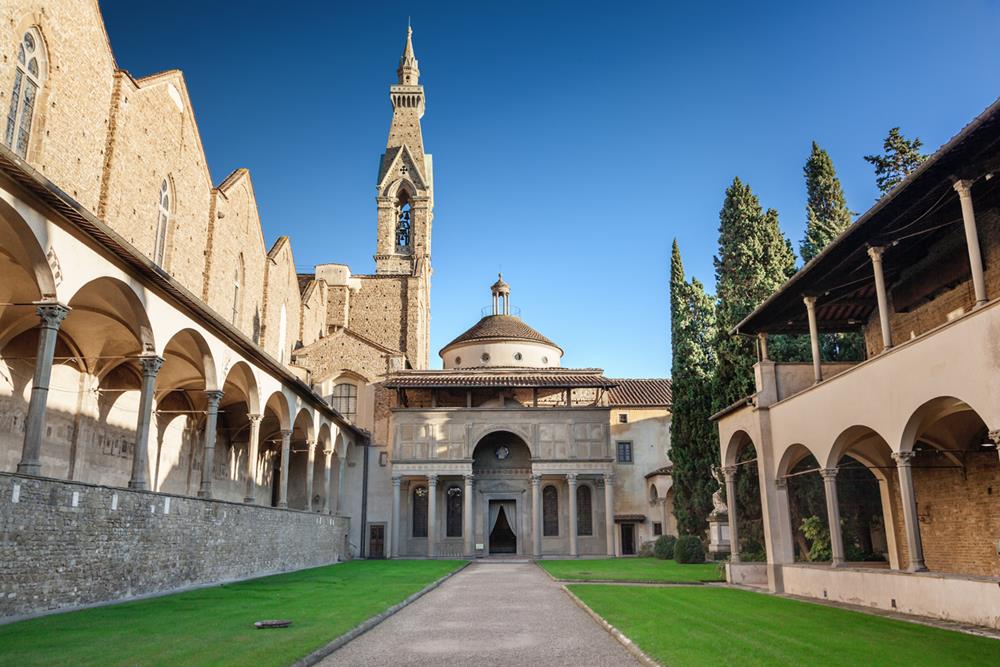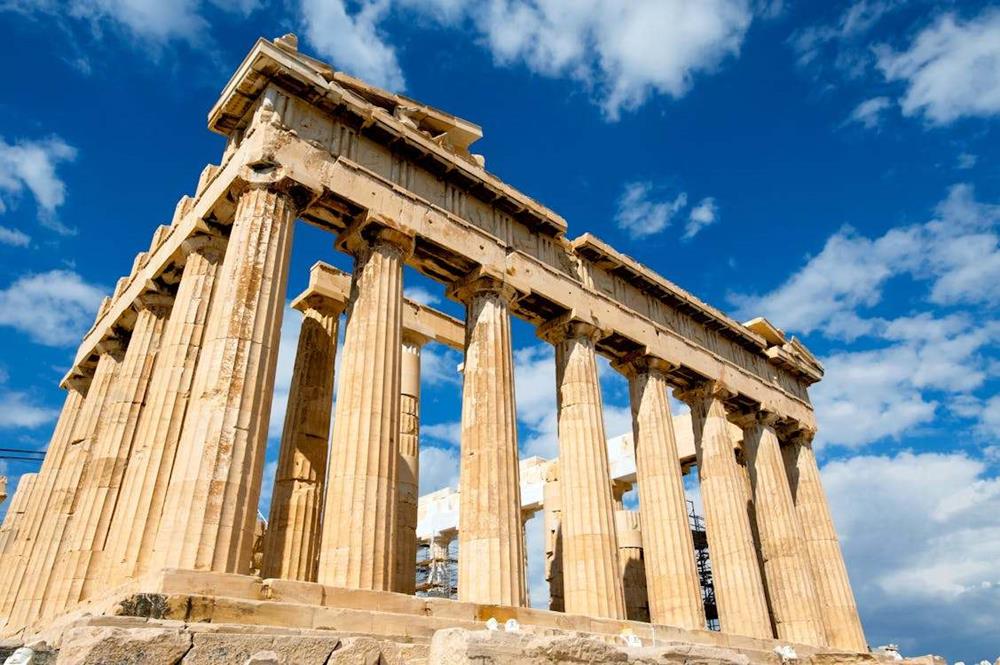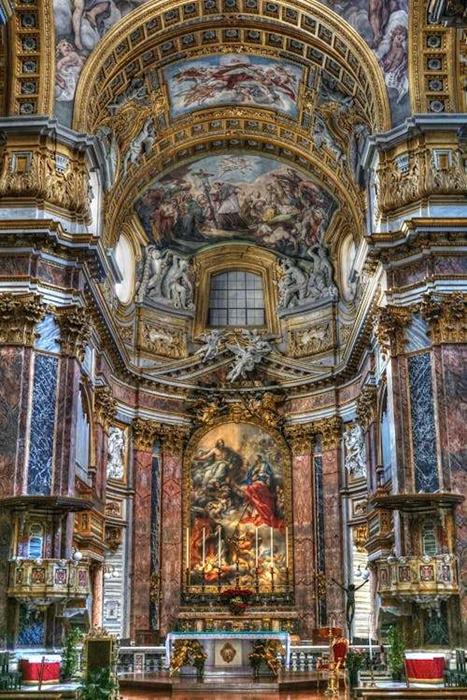The Renaissance, a beacon of cultural, artistic, and intellectual rebirth, spanned from the 14th to the 17th century, marking a pivotal shift in the way society approached art, science, and thought. Among its most enduring legacies is Renaissance architecture, a style that encapsulated the era’s newfound appreciation for classical traditions, humanist values, and a harmonious universe. This blog post delves into the four defining characteristics that underscore the elegance and innovative spirit of Renaissance architectural design.
I. Symmetry and Proportion in Renaissance Architecture
The Renaissance era, characterized by a revival of classical learning and wisdom, brought with it a renewed focus on the architectural principles of symmetry and proportion. These principles, which are deeply rooted in the natural world and the architectural traditions of ancient Greece and Rome, became the cornerstone of Renaissance architectural philosophy, guiding the design and construction of buildings that continue to captivate with their beauty and harmony.
The Mathematical Foundation of Beauty
Renaissance architects were not just builders; they were scholars, mathematicians, and philosophers who believed in the Pythagorean idea that the universe was constructed according to mathematical principles. This belief was reflected in their approach to architecture, where they employed mathematical precision to create spaces that embodied the ideal of geometric perfection. The use of ratios and geometrical forms, such as circles and squares, was common, with the aim of achieving a perfect balance between the parts and the whole.
Filippo Brunelleschi, one of the luminaries of Renaissance architecture, exemplified this approach in his designs. Brunelleschi’s work on the Pazzi Chapel in Florence is a masterclass in the use of symmetry and proportion. The chapel’s façade, with its orderly arrangement of arches, columns, and pediments, showcases a meticulous attention to geometric balance, each element carefully sized and placed to achieve an overall harmony that is both visually pleasing and intellectually satisfying.
The Harmony of Parts to Whole
In Renaissance architecture, the concept of symmetry extended beyond the mere mirroring of forms to encompass a more complex and nuanced understanding of balance and harmony. Architects sought to ensure that every component of a building related harmonically to the others and to the structure as a whole. This holistic approach meant that the dimensions of a room, the height of a column, or the width of a doorway were not arbitrary but were carefully calculated to relate to each other in a meaningful way.
The principle of proportion, similarly, was about more than just the aesthetic appeal; it was tied to the Renaissance humanist philosophy, which placed human beings at the center of the universe. Buildings were designed with human scale in mind, making them more accessible and relatable. The proportions used in Renaissance buildings often reflected the proportions of the human body, a concept inspired by the ancient Roman architect Vitruvius and later popularized by Leonardo da Vinci in his famous drawing, the Vitruvian Man.
The Facade of the Pazzi Chapel
The Pazzi Chapel serves as a prime example of the Renaissance dedication to symmetry and proportion. The chapel’s façade is a harmonious composition of architectural elements, each carefully proportioned and placed to create a sense of balance and unity. The use of pilasters, round arches, and a central dome not only adds to the aesthetic appeal of the chapel but also reflects the mathematical and philosophical principles that underpinned Renaissance architectural thought.
The interior of the chapel further demonstrates the use of symmetry and proportion, with a layout that is both simple and sophisticated. The space is organized around a central plan, with a dome that rises elegantly above, creating a sense of vertical harmony that complements the horizontal symmetry of the façade. The use of pendentives to support the dome is a technical innovation that also serves a proportional function, seamlessly integrating the dome with the square layout of the chapel.
II. Humanism and Individualism in Renaissance Architecture
The Renaissance era was a remarkable period of awakening, where the revival of classical knowledge fused with the burgeoning spirit of humanism to redefine society’s cultural and intellectual landscape. This humanist philosophy, with its core belief in the value and agency of human beings, had a profound and transformative impact on various fields, including architecture. It ushered in a new architectural ethos that celebrated human potential, individual dignity, and the experiential aspects of space.
- The Shift Towards Human-Centered Design: At the heart of Renaissance architecture was a deliberate shift towards designs that embraced the human scale and experience. This was a significant departure from the Middle Ages’ architectural norms, where structures often dwarfed the individual, emphasizing divine or royal authority over personal experience. Renaissance architects, inspired by the humanist ideals, sought to create environments that were not only magnificent but also relatable and accessible to the individuals who used them. Buildings and public spaces were carefully proportioned to relate to the human form, making them more inviting and comfortable for everyday human activities.
- Public Spaces as Social Hubs: The renaissance of humanist thought gave rise to the design of public spaces that were intended to be vibrant hubs of social interaction and civic life. Piazzas, for instance, were not merely open spaces but carefully planned areas that encouraged gathering, discourse, and the exchange of ideas. The Piazza della Signoria in Florence serves as a prime example, acting as an outdoor room framed by the Uffizi galleries and the Palazzo Vecchio. It was a place where art, politics, and daily life intersected, embodying the Renaissance’s celebration of community and individual expression.
- Churches and the Individual Experience: Even religious architecture, such as churches and basilicas, which traditionally emphasized the majesty and transcendence of God, began to incorporate elements that honored the individual’s spiritual journey. St. Peter’s Basilica, with its awe-inspiring scale, is a testament to this dual focus. While its grandeur evokes a sense of the divine, the basilica’s design—particularly its nave, chapels, and altars—facilitates personal reflection and intimate religious experiences. The inclusion of artworks and architectural details that resonate with human emotions and stories further underscores the humanist influence, making the sacred space more relatable and engaging for worshippers.
- The Role of Individual Patrons and Artists: The era also saw an increased role of individual patrons and architects in shaping the architectural landscape. Wealthy families, such as the Medici of Florence, commissioned buildings and public works that not only served communal purposes but also reflected their personal tastes, aspirations, and contributions to society. This patronage system led to a flourishing of architectural innovation, as architects like Brunelleschi and Alberti had the freedom to experiment with new forms and ideas that aligned with humanist principles. The result was a rich tapestry of buildings and spaces that reflected the individuality of their patrons while contributing to the cultural and social vitality of Renaissance cities.
The humanism and individualism of the Renaissance redefined architecture as a medium for human expression and experience. By prioritizing human scale, fostering social interaction, and celebrating individual contributions, Renaissance architects created spaces that were not only functional and beautiful but also deeply connected to the human spirit. This legacy of human-centered design continues to influence architectural thought, reminding us of the profound impact our built environment can have on our collective and individual lives.
III. Classical Influences and Columns in Renaissance Architecture
The Renaissance marked a period of intense intellectual and artistic revival, where the rediscovery of classical antiquity played a pivotal role in shaping new directions in art and architecture. This era’s architects, with a profound respect for the achievements of ancient Greece and Rome, sought to resurrect and reinterpret classical principles to suit the needs and aspirations of their time.
Reconnecting with the Classical Past
The fascination with classical antiquity was not merely aesthetic but deeply intellectual. Renaissance architects immersed themselves in the study of ancient ruins and the surviving texts of classical authors, most notably Vitruvius, whose treatise “De Architectura” provided invaluable insights into Roman architectural principles. This engagement with the classical past was driven by a belief in the timeless values of harmony, proportion, and beauty that ancient architecture represented.
The Role of Columns in Renaissance Architecture
Columns, a hallmark of classical architecture, were enthusiastically adopted by Renaissance architects, not just as structural elements but as symbols of a rich cultural heritage. The use of columns in Renaissance buildings served multiple purposes: they provided structural support, defined spatial organization, and added rhythm and elegance to facades and interiors.
Doric Columns
- Design: Doric columns are marked by their sturdy, straightforward construction and unadorned capitals, making them the most austere among the classical orderacs.
- Symbolism: They embody the virtues of strength and functionality, reflecting the classical Greek values of simplicity and durability.
- Usage in Renaissance Architecture: In the Renaissance period, Doric columns were often used to impart a sense of robustness and understated elegance to buildings, aligning with the era’s appreciation for classical purity and structural clarity.
Ionic Columns
- Design: Ionic columns are distinguished by their slender elegance and the iconic volutes on their capitals, which resemble scrolls.
- Symbolism: These columns strike a harmonious balance between the minimalist Doric style and the elaborate Corinthian order, representing grace and sophistication.
- Usage in Renaissance Architecture: Renaissance architects favored Ionic columns for their blend of austerity and ornamentation, using them to achieve an aesthetic of refined beauty and balanced proportions in their designs.
Corinthian Columns
- Design: Corinthian columns are the most ornate of the classical orders, characterized by their lavishly decorated capitals with acanthus leaves and intricate scrolls.
- Symbolism: They epitomize the pinnacle of architectural beauty and complexity in classical design, representing luxury, sophistication, and a high degree of craftsmanship.
- Usage in Renaissance Architecture: In Renaissance projects that sought to convey grandeur and opulence, Corinthian columns were the preferred choice, adding a layer of decorative richness and artistic detail to the architectural composition.
Innovation within Tradition
While Renaissance architects looked to the classical world for inspiration, they were not content with mere replication. Instead, they engaged in a creative dialogue with the past, reinterpreting classical motifs to reflect contemporary sensibilities and technological advancements. This innovative spirit is evident in the way columns were integrated into Renaissance buildings, often modified in scale, proportion, or decorative detail to achieve a harmonious overall effect that resonated with the humanistic values of the period.
The architectural vocabulary of columns was expanded, with architects experimenting with variations such as pilasters (flat, column-like structures attached to walls) and engaged columns (partially embedded in walls), which allowed for greater flexibility in design while maintaining a classical aesthetic. These adaptations demonstrated the Renaissance architects’ skill in melding tradition with innovation, creating a distinctive style that honored the past while addressing the present’s needs.
Columns as Expressions of Identity and Power
Beyond their structural and decorative roles, columns in Renaissance architecture also served as potent symbols of identity, authority, and continuity with the classical world. Patrons and architects used classical motifs, including columns, to assert their cultural sophistication, intellectual prowess, and connection to the revered traditions of ancient Greece and Rome. In this way, columns transcended their architectural functions to become embodiments of the Renaissance’s broader cultural and intellectual aspirations.
IV. The Integration of the Arts in Renaissance Architecture
The Renaissance era heralded a groundbreaking approach to design that transcended traditional boundaries between different forms of art. This period witnessed an unprecedented integration of architecture, painting, and sculpture, converging to create spaces of unparalleled aesthetic and intellectual depth. This holistic approach not only elevated buildings beyond their functional purposes but also transformed them into immersive works of art, offering a multi-sensory experience to all who entered their doors.
- A Symphony of Disciplines: The Renaissance vision was one of unity and harmony, not just within the architectural elements themselves but also in the relationship between architecture and other art forms. Architects of the time worked closely with painters and sculptors to ensure that each component of a building’s design contributed to a cohesive aesthetic narrative. This collaboration was grounded in the humanist ideals of the period, which celebrated the beauty of the interconnectedness of all human endeavors.
- Artistic Storytelling Through Architecture: The integration of the arts in Renaissance architecture was also a powerful tool for storytelling. Every fresco, relief, and statue was carefully chosen to contribute to the building’s narrative, whether it was the depiction of biblical stories, mythological scenes, or historical events. This narrative function was particularly prominent in religious buildings, where art and architecture combined to create an immersive environment that communicated theological concepts and stories to the faithful.
- Technological Innovation and Artistic Expression: The integration of the arts during the Renaissance was also facilitated by technological innovations in architecture. The development of new techniques, such as perspective in painting and advances in structural engineering, allowed architects and artists to explore new forms of expression. The use of perspective, for instance, enabled painters to create the illusion of depth on flat surfaces, extending the architectural space into the realm of the painted image and vice versa.
The Renaissance’s integration of architecture, painting, and sculpture was a radical departure from previous practices, reflecting the era’s broader cultural and intellectual shifts. This holistic approach to design resulted in buildings that were not merely structures but complex works of art that engaged the viewer on multiple levels. The legacy of this integration is a testament to the enduring power of interdisciplinary collaboration in creating spaces that are not only functional but also profoundly beautiful and meaningful.
Conclusion
The Renaissance period in architecture stands as a testament to humanity’s enduring quest for beauty, harmony, and understanding. The four characteristics—symmetry and proportion, humanism and individualism, classical influences, and the integration of the arts—embody the spirit of the Renaissance, reflecting a profound appreciation for the past while celebrating the potential of the human spirit. These principles have left an indelible mark on the architectural landscape, influencing generations of architects and continuing to inspire those who seek to blend beauty, function, and meaning in the built environment. As we continue to navigate the challenges and opportunities of our own time, the Renaissance serves as a beacon, reminding us of the transformative power of architecture to reflect and elevate the human condition.




